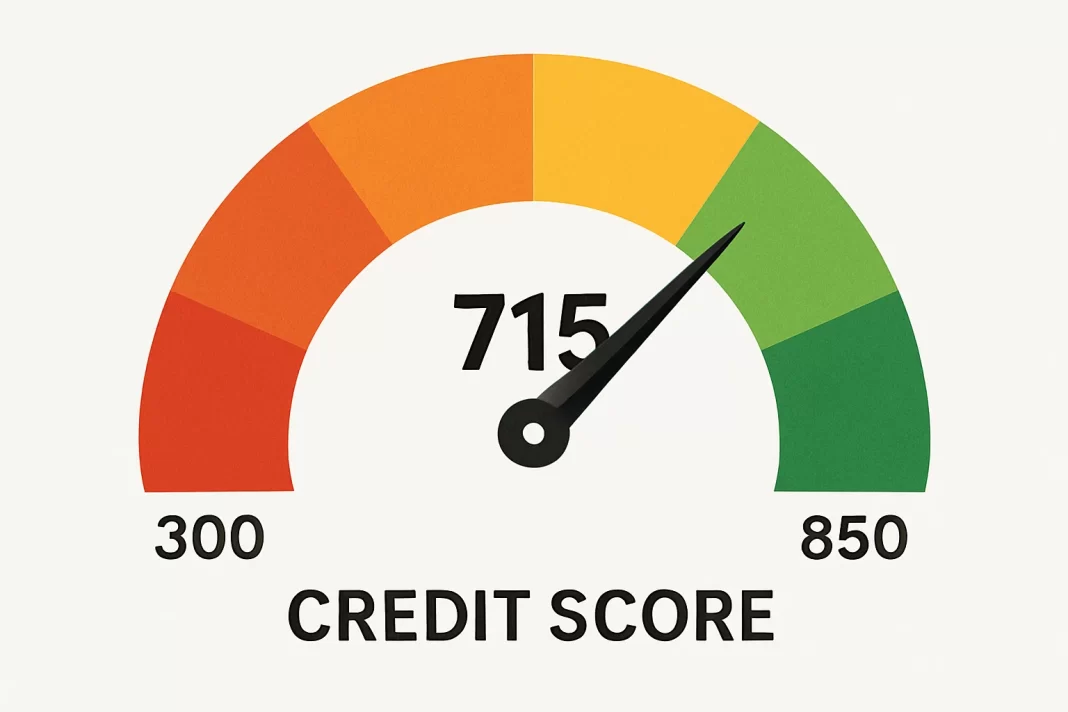Alright, folks, time for a reality check. The average credit score in America right now is 715. That’s right — 715. Not quite the stuff of legends, but it’s decent enough to get you into a solid pizza place and maybe even snag some decent credit card perks. But let’s be honest: You want more than just a “meh” score, don’t you? Spoiler alert: You’re not alone.
So, how did we get here? And more importantly, what’s your score saying about you? Let’s dive into this whole credit score mess and figure out how to (hopefully) make it better.
The 715 Club: Where Most of Us Live (and Maybe Shouldn’t Be)
If your credit score is a humble 715, you’re sitting in the “Good” range. You’re not great, you’re not terrible — you’re the credit score equivalent of a solid B+ in a high school class you don’t really care about. But hey, it’s better than failing, right?
Here’s how the FICO® scores break down for those who didn’t study the chart:
-
800 to 850: Exceptional (Cue the confetti — these people probably own two homes, never pay interest, and can buy a car without blinking.)
-
740 to 799: Very Good (You’re doing alright. Maybe not sending everyone your credit score, but hey, we see you.)
-
670 to 739: Good (You’re in the game — just don’t push it too hard.)
-
580 to 669: Fair (There’s room for improvement — and we’re here for it!)
-
300 to 579: Poor (We’ve all had those months. But c’mon, time to get it together.)
Old-Timers vs. Young Bucks: Who’s Winning at Credit Scores?
Surprise! The older you get, the better your credit score tends to be. Shocking, right? Apparently, decades of paying bills, avoiding impulse buys, and actually reading credit card agreements leads to higher scores. Who knew?
Here’s the breakdown for the generational credit score showdown:
-
Silent Generation (77+): 760 (They’ve been around the block, folks.)
-
Baby Boomers (58-76): 746 (Still crushing it, even with a mortgage they’ve had since the 80s.)
-
Generation X (42-57): 709 (Not bad, but it’s that whole “too busy to care about perfect credit” thing.)
-
Millennials (26-41): 691 (We’re still figuring out if we should buy a home or spend it all on avocado toast.)
-
Generation Z (18-25): 681 (Hey, at least we’re not 600 yet — small victories.)
The 850 Dream: The Stuff of Legends
Let’s talk about that golden ticket: the perfect 850. Only about 1.5% of Americans have hit this unreal level of credit glory, and let’s face it, those people are probably just pretending to be perfect. (We’re looking at you, baby boomers.) They’ve never missed a payment in their life, probably don’t even know what debt feels like, and can buy a Tesla with the swipe of a finger. Must be nice.
Here’s the breakdown:
-
850: 1.54% (Living the dream. Send us a postcard.)
-
800 to 849: 24% (You’re very good, but maybe not putting on a “perfect” show.)
-
750 to 799: 24% (Oh, you think you’re pretty good, huh?)
-
300 to 649: 25% (We see you, but we don’t really see you.)
Income and Credit Scores: Because of Course It’s All About Money
Money talks — and it says, “If you’re rich, your credit score is probably awesome.” Shocker, right? If you’ve got cash to burn, your credit score tends to be on the up-and-up. Those with higher incomes (cough the rich) have an average score of 774, while lower-income folks are stuck in the 658 range. So, yeah, your paycheck does have an effect on how much your bank loves you.
Here’s how the income-to-credit-score ratio shakes out:
-
Low Income: 658 (Still fighting the good fight!)
-
Moderate Income: 692 (Getting there. Kind of like upgrading to first class with your points.)
-
Middle Income: 735 (Look at you, doing pretty well with those rewards programs!)
-
High Income: 774 (I bet you’ve never paid a cent over your credit card balance, have you?)
State of the States: Where’s Your Credit Score On the Map?
It’s true — where you live can influence your score. People in Minnesota are chilling with a nice 742 on average, while those poor souls in Mississippi are crawling at 680. I mean, I guess that’s why everyone in Minnesota is so friendly — they’ve got good credit to back it up.
How to Boost Your Credit Score (Without Selling Your Soul)
Want to take your credit score from “good” to “perfect”? It’s possible, and it doesn’t require selling a kidney. Here’s how to get your score looking like a superhero:
-
Pay Bills on Time: Seriously, this is your golden ticket. Missing payments is like bringing a bad date to dinner — no one wants to see it.
-
Use Less Credit: Aim to spend less than 30% of your available credit. That means no more buying random things off Amazon just because you have the “buy now, pay later” option.
-
Avoid Credit Card Applications: Each time you apply for a new card, your score takes a tiny hit. Let’s be real — do you need another card for those free airline miles?
-
Keep an Eye on Your Credit: Mistakes happen, and you don’t want to find out your score is low because you accidentally paid a bill late — in 2015.
FICO vs. VantageScore: Which One’s the Real MVP?
Okay, now we’ve got to talk about the two main players in the credit score game: FICO and VantageScore. FICO is the big dog, but VantageScore is the cool new kid on the block. They both work the same general way, but VantageScore is like the “more forgiving” friend who actually cares about things like your rent payments. So, if you’re renting, VantageScore could be your new bestie.
Final Thoughts: Your Credit Score is What You Make of It
In 2025, America’s credit score is decent, but let’s be honest — you can do better. Whether you’re cruising with a 715 or dreaming of the 850 club, you’ve got the power to make your score work for you. Pay your bills, use less credit, and stop buying everything on a whim. Who knows? In a year, you might just be sending out a “perfect credit score” Christmas card.









